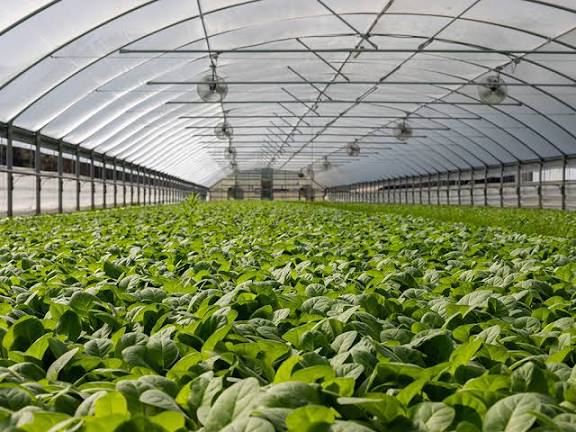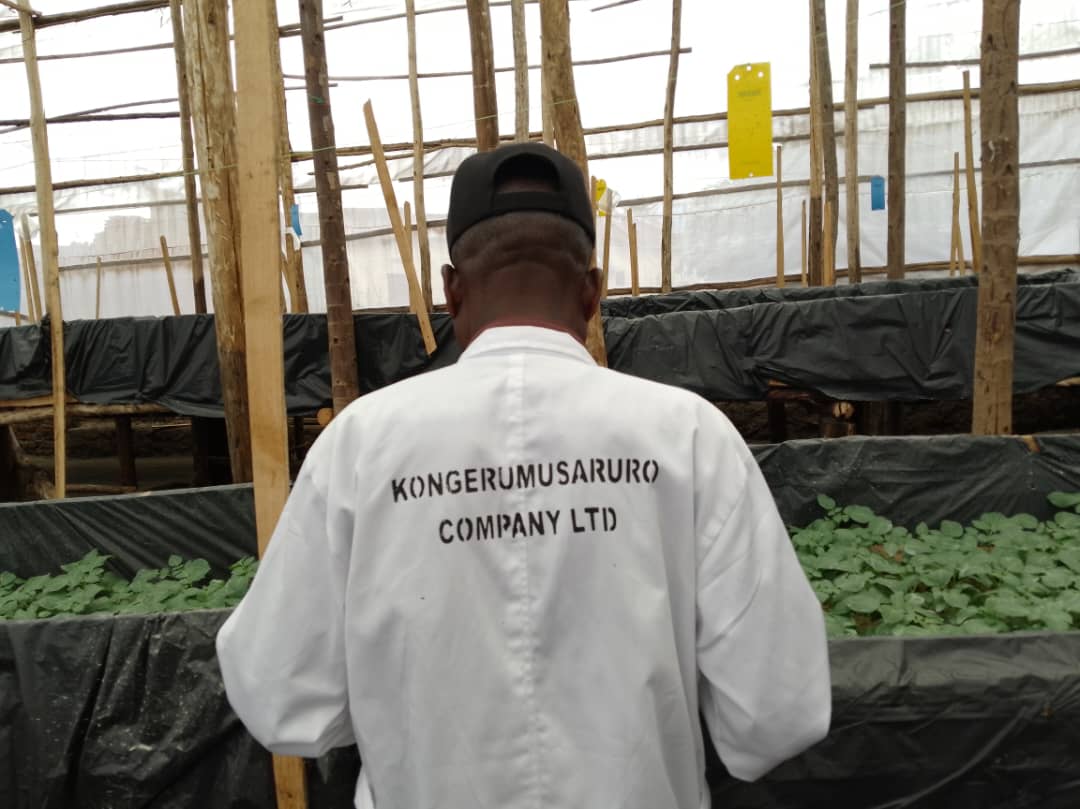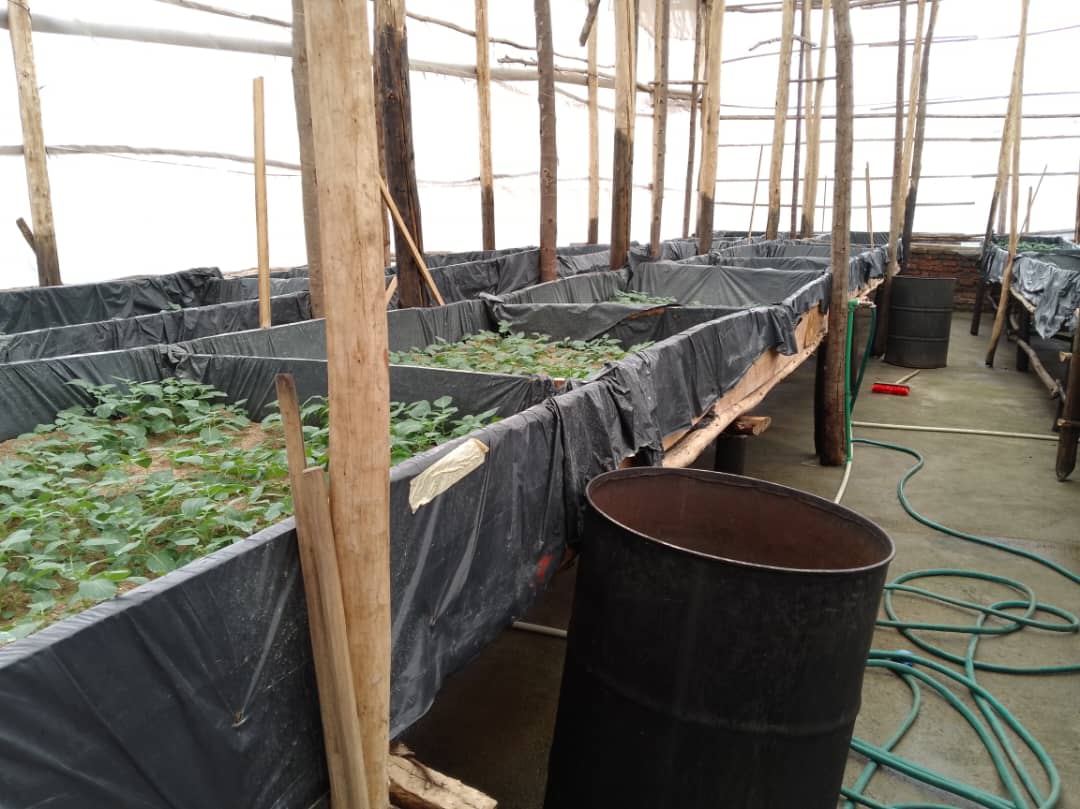Greenhouse farming as a solution to climate change challenges
Professional farmers are increasingly recognizing greenhouse farming as a reliable solution to the challenges caused by climate change. Traditionally, they feared cultivating during extreme weather seasons,whether prolonged droughts or heavy rainfall because of the risks of losses.
Isaac Nzabarinda, a potato seed multiplier in Kinigi sector, Musanze District, explained the benefits of greenhouse farming compared to open-field cultivation:
“Given the changing climate, greenhouses play a critical role in modern farming. Nowadays, you can trust the rains and they fail, or expect sunshine only to face heavy rainfall that destroys your harvest. After observing these patterns, we realized open-field farming no longer guarantees yields. That’s why we embraced greenhouse farming. Unlike traditional methods, it isn’t dependent on seasons, and the technologies we use for potato multiplication protect both soil and the environment.”
Farmers affirm that yields from greenhouse farming are significantly higher compared to open-field farming.
Evariste Nsengimana, a tomato farmer from Bugesera District, highlighted the challenges he faced with open farming:
“Despite cultivating a large piece of land, my tomato harvests were very poor due to prolonged sunshine. As farmers, we are obliged to keep working, but often we don’t make any profit.”
Another major advantage of greenhouses is that crops are protected from most plant diseases.
Vincent Twagirayezu, director of Agahozo Farm, shared how his company embraced greenhouse farming and is now scaling up:
“Today, we have only one greenhouse, but it’s just the beginning. We’ve rented a few more, which gave us practical experience. With that, this single greenhouse we own could lead us to establish over 100 in the future. For example, each tomato plant here yields thousands of fruits; if one greenhouse gives us 10–15 tons, you can already imagine the scale of production.”
However, despite their benefits, many citizens still perceive greenhouses as unaffordable due to the high construction costs.
Pierre Damien Ndaguha, a training officer with the Sustainable Agricultural Intensification Program (SAIP), explained that affordable alternatives exist:
“Currently, we have a 480 m² wooden greenhouse (16/30 meters) which, together with seeds, costs about 17.5 million Rwandan francs.
A steel-structured one would cost over three times as much. Yet this wooden model lasts for five years. If a farmer harvests 12 tons of tomatoes, even at a minimum price of 800 RWF per kilogram, the revenue from one season already recovers at least half the investment.”
Through SAIP, the Ministry of Agriculture and Animal Resources provides up to 70% subsidies to farmers who wish to establish greenhouses.
Agriculture Minister Dr. Mark Cyubahiro Bagabe emphasized the government’s commitment to productivity:
“A farmer who adopts modern inputs and irrigation will inevitably achieve higher yields. Our agricultural policy focuses on maximizing production per unit of land, rather than expanding farmland. This ensures both food security and surplus for markets.”
As part of the country’s development strategy (NST2), the Government of Rwanda committed to raising annual agricultural growth to over 6%, up from 5% in 2004.





Interesting Story ! Big Up
Thank you very much Nizeyimana! Stay with Greenafrica.rw